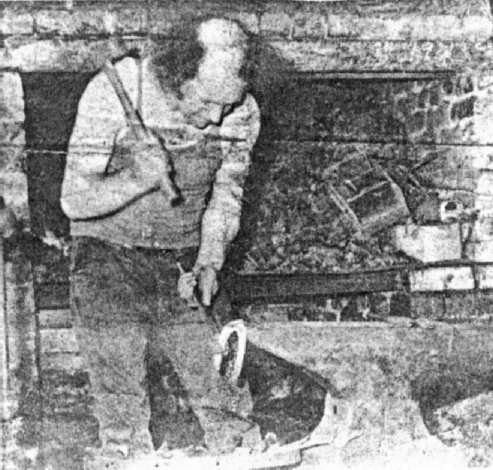
1974 - First Boy Scout establishment in the world to be able to sell alcoholic beverages on the premises (Scout Hut). Scouts take turns in serving behind the bar (not in uniform). Presently one of the better pints in Wheatley Hill.
Last Blacksmith to work the Chestnut Forge
The blacksmith's shop in the main street of Wheatley Hill was the setting for a sponsored "shoe-in" by the village smithy, Alan Hood. as he was sponsored by some of the local inhabitants on the number of horseshoes he could make in two hours.
Alan had originally hoped to reach a target of 25 but his final tally was one of 37, by which he raised approximately £200 in aid of a jubilee party for local children.(From newspaper clipping)

Thornley man Alan Hood is really forging ahead with his mobile blacksmith business.
For, despite being one of a dying breed, 34 year old Alan, who owns the Chestnut Forge, Wheatley Hill, has a successful business tending to horses all over the county.
When he took over the forge in 1973 Alan decided he had to keep up with the times so he scrapped working on farm implements and concentrated on shoeing horses for riding schools and hunts.
Now he has a full appointment book and regular customers in a 25-mile radius. He covers a large area as far as Darlington.
"I started the job 19 years ago and I have never done anything else nor have ever wanted to, I am one of a the last of the dying breed. There are only a few of us left in the county," he said.
The forge I took over has been here since the 1920s and I hope it's here in the year 2200.
"Perhaps after my days as a smithy are over this forge could die out. The trouble is that when the blacksmiths pass on there are no youngsters coming up to take their place.
"A lot of youngsters are not interested, perhaps because they think it is an old fashioned trade that they cannot use elsewhere. Another reason might be that it is such hard work, I do not think many lads would be keen on that nowadays."
Alan who lives in Gore Hill Estate, Thornley, has won many competitions and was best farrier in the county under-26 category for three years.
Now he visits horse owners all over the county, measures for shoes, and then comes back to make them at the forge. He usually makes five or six a day.
" I really enjoy my job. I love getting out and meeting different people rather than being stuck behind four walls all day."
" I take a lot of pride in my work, like other blacksmiths. Nowadays there are not many people who enjoy their job. I certainly do."(From newspaper article 1977)
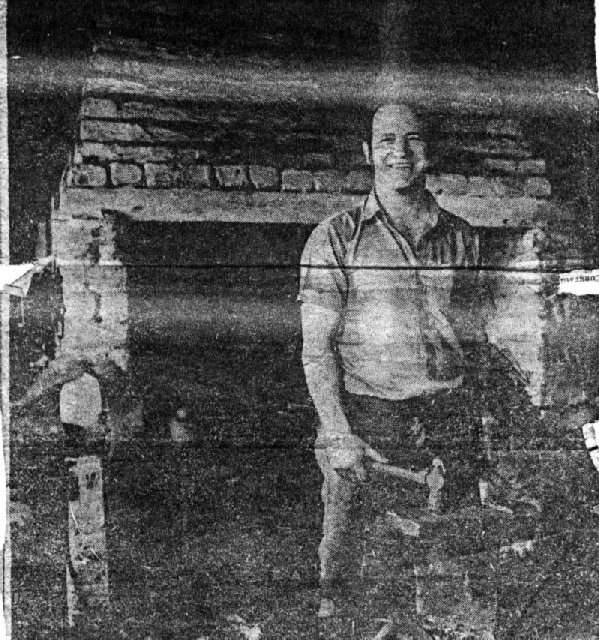
Unfortunately Alan was kicked by a horse and had to retire from the forge. Today it is the offices of a company selling houses in the area.
Letter from Easington District Council dated 2nd February 1988 with the following reports.
Easington District Plan - Report of Survey, prepared in 1979.
WHEATLEY HILL
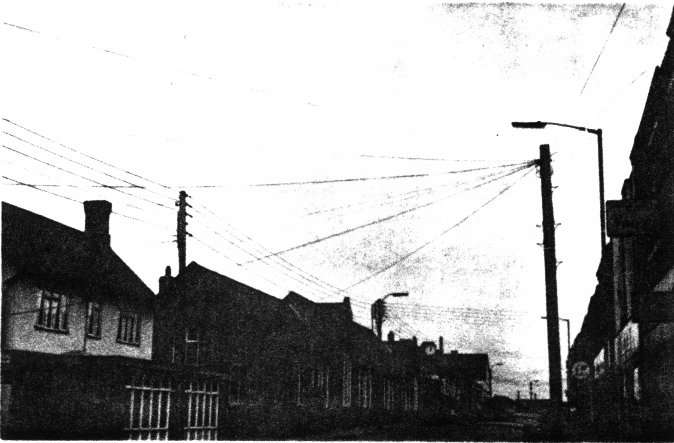
Easington District Local Plan - Wheatley Hill Chapter The Local Plan was adopted by the Council in 1983, as part of the statutory Development Plan for the District. The chapter describes the Council policies towards industrial and housing development in the village and identifies certain sites for environmental improvements. Since 1983 a small industrial area has been laid out on part of the Numbered streets and is in the process of being sold to a coach operator. The former Boys School has been demolished and the site redeveloped with nursery factory units. Only limited housing development has occurred within the past five years and the Numbered and Name Streets remain to be redeveloped. Work is, however, due to start in the1989/90 financial year on the construction of a by-pass to the south of the village, which will ultimately relieve the problems of heavy traffic that presently pass along Wingate Lane.
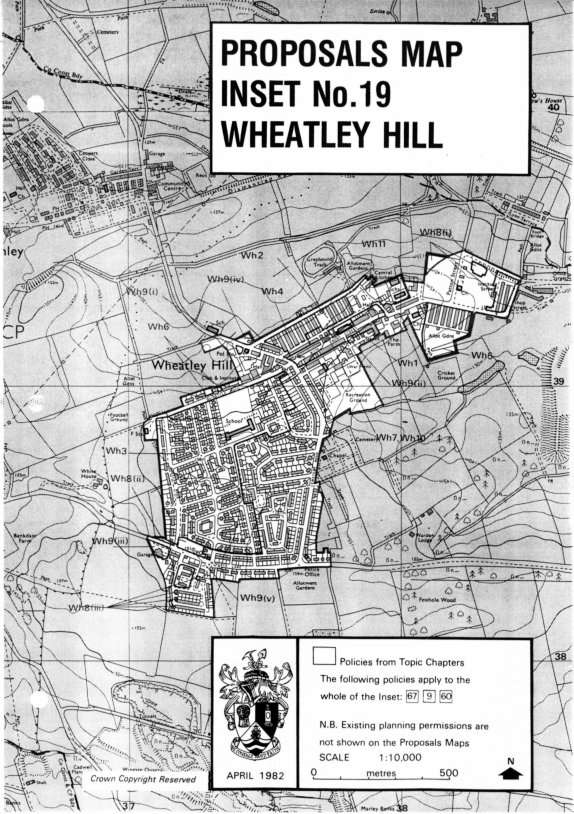
WHEATLEY
HILL
1.
INTRODUCTION
1.1
The closure of Wheatley Hill Colliery in 1968 and Thornley
Colliery in 1970 resulted in rising unemployment and population decline, with
the result that in most cases housing clearance has not been followed by
rebuilding. New development would do much to restore confidence in the village
but this is only likely to result from District Council initiatives, possibly
through the development of a small industrial estate or the disposal of Council
owned land for private or partnership development. In addition, continuing
environmental improvements are needed to make the village more attractive for
residents and to encourage private investment.
1.2
Past development extended the village south to the A181
with the result that many residents are a considerable distance from shops and
facilities. In order that this situation is not aggravated any new development
should be located as close to the central area as possible to provide support
for shops and facilities.
2.
POPULATION
Since
reaching its peak in the early 1950's, the population of Wheatley Hill has
declined to its current (1981) estimated level of 3,790. Continuing decline is
likely to occur over the Plan period, putting further pressure on the viability
of shops and services, unless positive action is taken to reverse the trend.
3.
EMPLOYMENT
3.1
The closure of Wheatley Hill Colliery in 1968 with the
loss of over 500 jobs and Thornley Colliery only two years later with 1,000
jobs, removed the village's major sources of employment. Over 200 miners still
live in Wheatley Hill and commute to working collieries, consequently the
village is still susceptible to contractions in the mining industry.
3.2
Although Thornley Station Industrial Estate lies only one
mile to the east of Wheatley Hill and there is good access to Peterlee
Industrial Estates via the A181, there is a need to provide alternative
employment opportunities within the village to reduce unemployment and stem
out-migration. In view of the particularly serious nature of the employment
problem in Wheatley Hill, it is considered that the settlement justifies a high
priority in the creation of employment opportunities through the development of
a small industrial estate and the conversion of suitable redundant buildings to
industrial use. The latter would be particularly cost-effective through
utilising existing infrastructure. Advantage should be taken of assistance
available from bodies such as Co.S.l.R.A. and the Development Commission who
have designated Wheatley Hill an area of special need.
Former Boys' School, Front Street
3.3
The former Boys' School on Front Street is now vacant and
a feasibility study is being carried out into its suitability for conversion. In
view of its prominent location in the shopping centre the most appropriate uses
for the building, or site if the building was demolished, would be light
industry, wholesale or retail use.
POLICY Wh 1 THE
USE OF THE FORMER BOYS' SCHOOL, FRONT STREET AS EXISTING, OR THE SITE ON
REDEVELOPMENT, FOR LIGHT INDUSTRY, WHOLESALE OR RETAIL PURPOSES WILL NORMALLY BE
APPROVED.
Land North of Former Boys'
School, Front Street
3.4
This land forms part of the larger site known as the Numbered Streets
formerly occupied by terraced housing. Although the land was previously
identified for housing redevelopment, with falling demand adequate land more
suitable for housing can now be provided elsewhere in the village. In location
terms, the land would be suitable for industrial development, being close to the
village centre and yet not overlooked by houses. In view of the need to provide
local employment opportunities in Wheatley Hill it is considered that
the
District Council should develop the site as a small industrial estate. In order
to protect the amenity of existing and proposed housing (see PolicyWh 4), a
substantial landscaped buffer should be provided to the west of the industrial
estate.
POLICY Wh 2
THE DISTRICT COUNCIL WILL DEVELOP AN INDUSTRIAL ESTATE ON THE LAND
NORTH OF THE FORMER BOYS' SCHOOL, FRONT STREET.
4.
HOUSING
Existing Stock
4.1
There are approximately 1,540 dwellings in Wheatley Hill
of which over two-thirds are in District Council ownership.
House Conditions
4.2
Although many Council houses have been subject to full or
partial improvement schemes, a considerable number have been identified as being
still in need of improvement. In addition, the environment of the Council
estates would benefit from tree and shrub planting. The private housing is
generally in good condition and in more attractive surroundings.
Housing Estate South of Quilstyle
Road
4.3
Although several properties in this Council housing estate
have been improved a considerable number still need full improvement schemes.
The areas of open space within the estate are bare and would benefit from
landscaping.
POLICY
Wh 3
THE DISTRICT COUNCIL WILL IMPROVE THE HOUSES AND ENVIRONMENT IN THE
ESTATE SOUTH OF QUILSTYLE ROAD
Implementation
1.
Henderson Avenue, Wheatley Terrace, Shinwell Terrace and part of
Wordsworth Avenue are included in the Council's priority list for housing
improvements. The remainder identified as being in need of improvement will be
included in a future programme.
New Council Housing
4.4
The Patton Street housing development accommodated
residents from the Numbered Streets which were subsequently demolished. It was
originally intended that at least part of the latter site should then be
redeveloped to accommodate any remaining residents from the Numbered Streets,
residents from the Named Streets and to make provision towards general waiting
list demand. Since 1 975 however, continuing out-migration has significantly
reduced demand so that all general demand rehousing can be met within existing
stock. There is a small need for aged persons' accommodation and it is intended
that this will be provided by a Housing Association. In view of this overall
lack of demand it is now considered that the Numbered Streets site should be
released for private housing and industrial development (see Policy Wh 2).
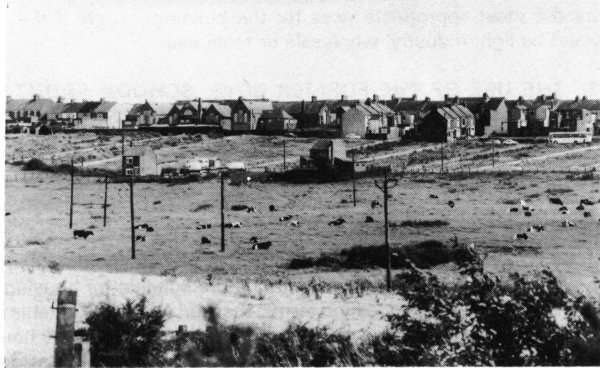
New Private Housing
4.5
Although there has been little interest from the
private housing sector in developing in Wheatley Hill, recent clearance,
redevelopment and environmental improvements should make the village more
attractive for private investment. Suitable sites should, therefore, be
identified and the possibility of partnership arrangements with private
developers should be investigated by the District Council.
Numbered Streets
4.6
With the exception of the northern five properties
of First Street which are to remain for the foreseeable future, the Numbered
Streets have been cleared and are in the ownership of the District Council. The
eastern part of the site is proposed for a small industrial estate and
substantial landscaped buffer (see Policy Wh 2). A doctor's surgery is being
developed on the remainder of First Street and planning permission has been
granted for a small aged persons' housing development adjacent to Percy Street.
The remaining land is ideally related to shops and facilities and its
redevelopment for housing should be actively promoted. In order to cater for the
demand for low cost housing, the District Council will investigate partnership
schemes as a means of securing its development.
POLICY Wh 4 THE DEVELOPMENT OF
THE LAND BETWEEN FIRST STREET AND NINTH STREET FOR HOUSING WILL NORMALLY BE
APPROVED.
Implementation
1.
The District Council will dispose of the land for private housing
development.
Named Streets
4.7
The majority of properties in the Named Streets have
now been cleared and the site should soon be available for redevelopment. The
allotments to the south of the area do, however, substantially detract from
its appearance and must be relocated or rationalised. The redevelopment of the
whole area for housing should then be promoted as it is well related to the
village centre and has very attractive views southwards over open countryside.
Piecemeal development of the area would be unacceptable.
POLICY Wh 5 THE REDEVELOPMENT OF THE NAMED STREETS
AND ADJACENT ALLOTMENTS FOR HOUSING WILL NORMALLY BE APPROVED.
Implementation
1.
The District Council will discuss with the owners the relocation of the
allotments.
2.
The District Council will dispose of the land for private housing
development.
Infill Sites
4.8
On the north side of Quilstyle Road are two sites
which would each be suitable for development of a single house.
POLICY Wh 6 THE DEVELOPMENT OF THE TWO INFILL SITES, QUILSTYLE
ROAD FOR HOUSING WILL NORMALLY BE APPROVED.
Implementation
1.
The land adjacent to 9, Quilstyle Road is owned by the District Council
and will be disposed of for the development of a single house.
5.
TRANSPORT
Wheatley
Hill is well located in relation to major traffic routes, with the A181 which
runs through the southern part of the settlement providing links eastwards to
the A19(T) and Peterlee and westwards to the centre of the County. The County
Council intends to construct a southern by-pass on the A181 which would remove
heavy traffic flows from this part of the village. Due to financial restrictions
this will not take place during the Plan period. A minor improvement scheme is,
however, to be carried out on the B1279 at the eastern end of the village.
6.
ENVIRONMENT
6.1
Due
largely to extensive reclamation over the last ten years, Wheatley Hill is now
set in attractive surroundings. Despite these major improvements, much still
remains to be done if Wheatley Hill is to be attractive for residents and to
encourage new investment. Priority should be given to the redevelopment of the
Numbered Streets (Policies Wh 2 and Wh 4) and the Named Streets (Policy Wh 5).
There are also several smaller sites elsewhere in the village which would
benefit from attention. In addition, overhead wires along Front Street are
particularly unsightly. The undergrounding of these wires is, however, unlikely
as the priority over the Plan period will be existing Conservation Areas.
Front Street Properties
6.2
Although the commercial shopping area of Wheatley Hill is
relatively stable, if it could be made more attractive in appearance, it would
encourage new investment. A relatively inexpensive means of achieving
considerable environmental improvement would be through a co-ordinate painting
scheme for the properties and tree planting along Front Street.
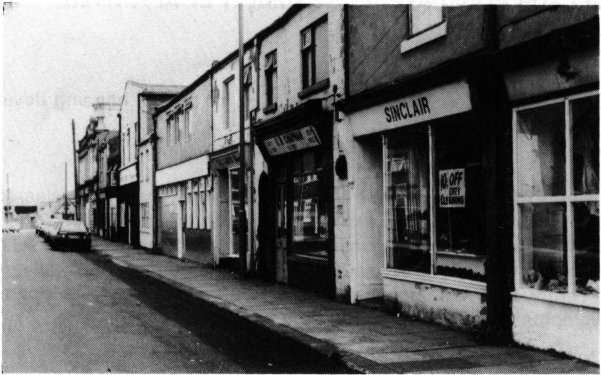
POLICY Wh 7 THE APPEARANCE OF FRONT STREET SHOULD BE IMPROVED
THROUGH THE PAINTING OF PROPERTIES AND, WHERE APPROPRIATE, LANDSCAPING.
Implementation
1.
A scheme will be drawn up by the District Council in consultation with
the Parish
Council
and property owners and will be carried out by labour provided through the
Manpower
Services Commission. The cost of materials would be shared by property owners
and
the District Council.
Other Environmental Improvements
6.3
There are a number of other areas, particularly on the
main traffic routes, which would benefit from landscaping.
POLICY
Wh 8
THE DISTRICT COUNCIL WILL IMPROVE THE FOLLOWING AREAS THROUGH
APPROPRIATE LANDSCAPING:
(i)
ADJACENT TO PATTON STREET HOUSING ESTATE (3 SITES)
(ii)
JUNCTION OF WINGATE LANE AND QUETLAW ROAD (WEST)
(iii)
HOUSING ESTATE SOUTH OF WINGATE LANE (5 SITES).
POLICY Wh 9 APPROPRIATE LANDSCAPING SHOULD BE CARRIED OUT IN
THE FOLLOWING AREAS:
(i)
ADJACENT TO COUNCIL YARD, THORNLEY ROAD
(ii)
EAST OF STEPHEN'S TERRACE
(iii) COMMERCIAL GARAGE, WINGATE LANE
(iv) COMMERCIAL GARAGE, THORNLEY ROAD
(v)
JUNCTION OF WINGATE LANE AND QUETLAW ROAD (EAST).
7. RECREATION
Formal Recreation Facilities
7.1
The formal recreation provision in Wheatley Hill is
provided by the recreation ground east of Cemetery road which has recently been
improved.
Golf Course
7.2 A need has been identified for an additional golf course in
this area of the District. The use of reclaimed land near to the village for
this purpose would have two major benefits. Firstly, it would provide a large
recreation facility and secondly, it would have an immediate uplifting effect
upon the local economy. The District Council will, therefore, promote the
project through the possible partnership development between the District
Council, County Council (as landowner) and a private company.
Play Areas/Open Spaces
7.3
Although there is a shortage of play areas and open spaces
in the Council housing estate between
Quilstyle Road and the A181 its layout effectively prevents additional
sites being provided.
8. SHOPPING
The
main shopping area in Wheatley Hill is located either side of Front Street and
recent surveys suggest that the number of shops is relatively stable, probably
because it serves both Wheatley Hill and Thornley. If the centre could be made
more attractive (see Policy Wh 7) this may serve to encourage further
investment. Any new shops over 100 square metres should be concentrated on Front
Street (as detailed in Policy 66, Shopping Chapter). Elsewhere in the village
Policy 67 (Shopping Chapter) which only allows shops of up to 100 square metres,
will be applied.
POLICY Wh 10 THE LOCAL SHOPPING CENTRE FOR WHEATLEY HILL WILL
CONSIST OF BOTH SIDES OF FRONT STREET.
9. EDUCATION. HEALTH, SOCIAL AND
COMMUNITY FACILITIES
Education
9.1
As the result of education reorganisation, several
buildings have become surplus to requirements. A feasibility study is being
carried out into the future use of the former Boys' School on Front Street (see
Policy Wh 1). The Infants' School, Church Street is to be converted to a Youth
Centre when finance allows. The former central kitchen to the north of these
schools is to be demolished. There would appear to be adequate capacity in
remaining schools to cater for any increase in the number of school children
likely to result from housing development over the Plan period.
Health
9.2
When the new doctors surgery which is being constructed on
First Street is completed, the village will be well served with health
facilities.
Community Facilities
9.3
The Youth and Community
Association uses the building adjacent to the Recreation Ground. There is a need
to provide alternative premises for a Youth Centre and it is intended that this
should be developed in the former Infants School when finance becomes available.
Planning permission has been granted for development of a new Fire Station at
the junction of Quetlaw Road and the A181 although its development during the
Plan period is unlikely.
Land North of Front Street and Church Street
9.4
This area of land east of the
Numbered Streets is in mixed use including a Scout Hut, School and vacant
buildings. The Infants' School is to be converted for community use. In view of
the existing uses, the location of the area and the need to improve its
appearance, it is considered that only compatible development of a recreational,
educational or community nature should be permitted. Industrial, commercial or
housing development should not normally be allowed and any buildings for which a
suitable alternative use cannot be found should be demolished and the sites
reclaimed for public open space.
POLICY Wh 11
THE USE OF THE LAND AND BUILDINGS NORTH OF FRONT
STREET AND CHURCH STREET FOR OTHER THAN RECREATION, EDUCATION OR
COMMUNITY PURPOSES WILL NOT NORMALLY BE APPROVED.
10. PUBLIC UTILITIES
As
a result of clearance over the past ten years, Wheatley Hill should have
adequate sewerage capacity to accommodate development of the scale envisaged
over the Plan period.
From an article in The Sunderland Echo, 17th September 1986
Parts of Wearside and County Durham have been branded as health black spots of the North in a new report out today.
It shows direct links between the health of the region's three million population and hardship.
Top of the list is Wheatley Hill in Easington.
With a population of 3,754 it has 52 deaths for people of under 65, and 23 low weight births between 1981 and 1983. There were 145 people reported as permanently sick or disabled in the same period.
Compare with districts in the South of England where health is good, Wheatley Hill had:
Three times as many people unemployed.
More than ten times as many households without a car.
High overcrowding.
Less home ownership.
The report adds that the severity of ill health in Easington and Hartlepool is striking.
Six Easington wards and two in Hartlepool feature among the list of the 25 worst places in the region made up 678 wards from Berwick to North Yorkshire and Cubria.
'Nashville' an article in The Northern Echo, 20th November 1986
From an article in one of the local papers, I think it may have been The Peterlee Times and am not sure of the date.
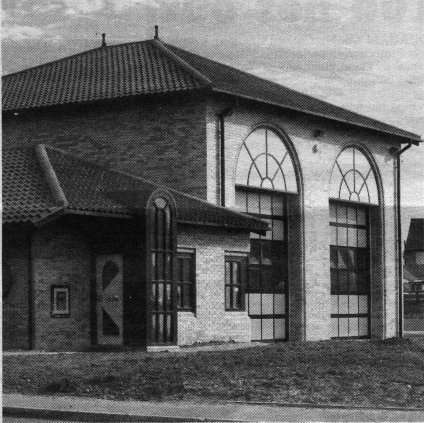
New style fire station opens
A new style fire station - the first in County Durham to be built with a 'practice house' rather than a drill tower - has been opened at Wheatley Hill.
The £300,000 building, designed by Durham County Council's Land and Property Department, will provide emergency cover for settlements in the surrounding area and replaces the old fire station which had long since passed its life expectancy.
The new station is manned by volunteer firemen who all live in Wheatley Hill, and houses two fire fighting appliances in addition to ancillary accommodation including a watch room, a leisure/recreation room, showers, various types of storage and drill area.
Because there are no high-rise buildings in the area covered by the station, and due to the fact that new plastic hose reels do not need to be hung up to dry, it was not considered necessary to build a drill/hose tower -- a common feature of most fire stations.
Instead, a practice house was provided in which normal domestic conditions can be simulated for the firemen to practice various types of fire fighting and rescue techniques.
The new fire station was built with traditional materials to harmonise with the surrounding houses but with in-built design elements to express its function.
Children with speech and language difficulties are to be given more places in mainstream schools in County Durham.
Two ten-place units are being provided at Cheveley Park Primary, Belmont, Durham, and at Wheatley Hill Primary, near
Peterlee. Plans are also being drawn up for units in other mainstream schools. If agreed they would eliminate the need for
children to attend Percy Hedley Special School in Newcastle.
Evening Chronicle, Newcastle-upon-Tyne, April 21, 1995.
October 1997-May 1998 Wheatley Hill Primary School Mosaic
A mosaic depicting a three dimensional representation of the village was constructed by the children under the guidance of Andrew Mckeon, a part time 'Artist in Residence'
12th
March 1999 - Demolition plan for abandoned homes
Easington DC is consulting residents on plans to demolish hundreds of homes in a bid to
stem abandonment. The council has prioritised four villages where many homes are standing empty, and some
have structural problems.
In Parkside, Seaham, a £1.5 million plan has
started to demolish 190 homes, sell off others, and build facilities including a community centre.
Residents in Murton, Wheatley Hill, and Thorney will be consulted soon, but the council has
warned that demolition will be a prime issue.
‘It costs about £7,500 per home to demolish, including compensation, landscaping and
improvements to tenants’ new homes,’ housing director Steve Southam said. ‘But it costs
£2,000 a year in vandalism, security and housing revenue account subsidy lost when they
stand empty.’
August 2004
Allan Fulcher sent me the attached article from the Readers Digest August edition. I will let the article speak for itself but the John Tulley in the article is the son of John Tulley from Wheatley Hill. Inspiring story.
Article in
Sunderland Star from Ray Jackson, South View dated 30th March 2006
about the changes in the Front Street.